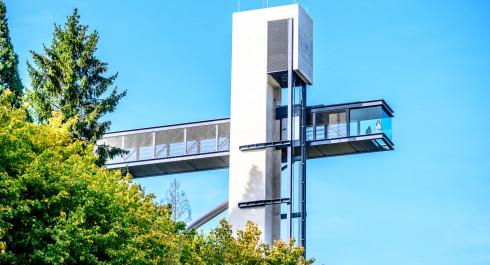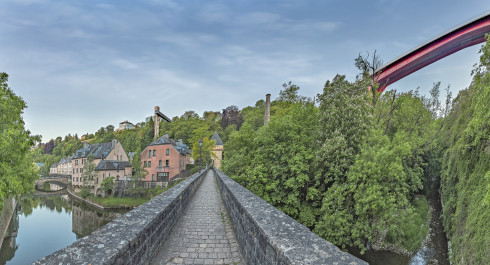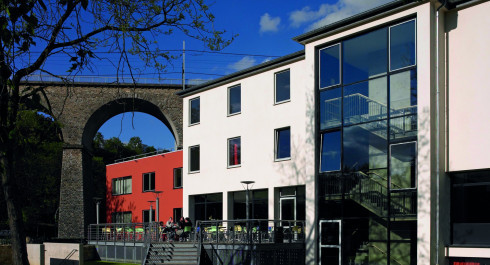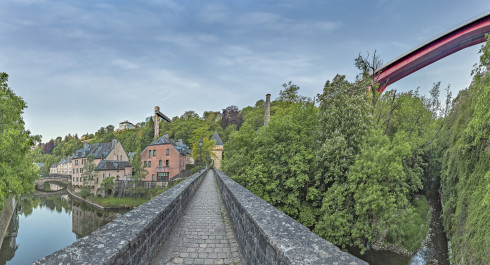
Pfaffenthal
Water has always been the defining element of the Pfaffenthal district. Over the course of thousands of years, a river by the name of Alzette and a tributary stream known as the Petruss dug deep into the sandstone and created a natural geological wonder in the middle of the capital.
Pfaffenthal, located sixty metres below the upper town
The Dällchen, as it is affectionately referred to by the people of Luxembourg, was once the site of the city's first hospital and maternity clinic. Craftsmen and professions that depended on the water of the rivers settled here: Weavers, dyers, tanners, millers, laundresses, and water carriers who brought fresh drinking water to the town above.
As laborious as it was for these water carriers to carry the fresh water drawn from the “Théiwesbour” in wooden buckets to the upper town, it takes only a minute today to glide comfortably down from the Kirchberg Plateau to the Pfaffenthal-Kirchberg railway station on the funicular.
The glass panorama lift is even faster. The half-minute ride down to Rue du Pont offers a spectacular view over the Pfaffenthal.

Kirchberg
Funicular

Monuments and places
Pfaffenthal Panoramic Elevator
Fortifications that are part of the UNESCO world heritage
From the Pfaffenthal, you can see the remarkable Grand Duchess Charlotte Bridge (popularly known as “Rout Bréck”, meaning “red bridge”). Another visible landmark is the Vauban-Siechentor as well as the stone footbridge known as the "Béinchen", a UNESCO World Heritage Site. The Vauban Tower is home to a small cinema that presents a free documentary on the historical development of the Pfaffenthal. Visitors can enter between 10:00 and 18:00.
From the Vauban-Siechentor, it is only a few steps to the famous fountain “Théiwesbuer”, where laundresses once scrubbed their garments and where in 2016 a public “Kneipp” water treading basin was installed.

Monuments and places
Grand Duchess Charlotte-Bridge

Monuments and places
Vauban Towers
One of the oldest mills in the country
Make sure not to miss the “Muerbelsmillen”, which was mentioned as early as 1083 and is thus one of the oldest mills in the country. It is quite a sight to see the magnificent waterwheel turning the mighty millstones for show. The former mustard factory now houses a museum, rooms for the local “Syndicat d'Initiative” and flats for students and doctoral researchers.
Last but not least: The terrace of the youth hostel near the Clausen district offers a spectacular view of the imposing rocky backdrop on which the upper town is enthroned.

Hostels
Youth hostel in Luxembourg City
Join a guided tour!
Whether you’re visiting Luxembourg City by yourself or with a large group, discovering the city’s secrets and little known historical facts with the guidance of a seasoned expert is always a good idea. Choose your tour and don’t forget to book in advance to guarantee your spot!

Tour
Top City Views

Tour
Vauban Circular Walk
Or go on a self-guided tour!
Photo gallery
How to get there?
By car:
Find the best parking for your stay with our Luxembourg-city parking guidance system.
By elevator :
There are two elevators connecting Ville Haute to the rest of the city, namely the Grund lift and the Pfaffenthal panoramic lift. The latter offers breathtaking views of both the lower and upper city, well worth a ride!
By public transport:
To go around the city, check out www.mobiliteit.lu which offers live and practical information on public transport in Luxembourg.
Useful information: all buses, trams and trains within the country of Luxembourg are free of charge for citizens and visitors alike.










